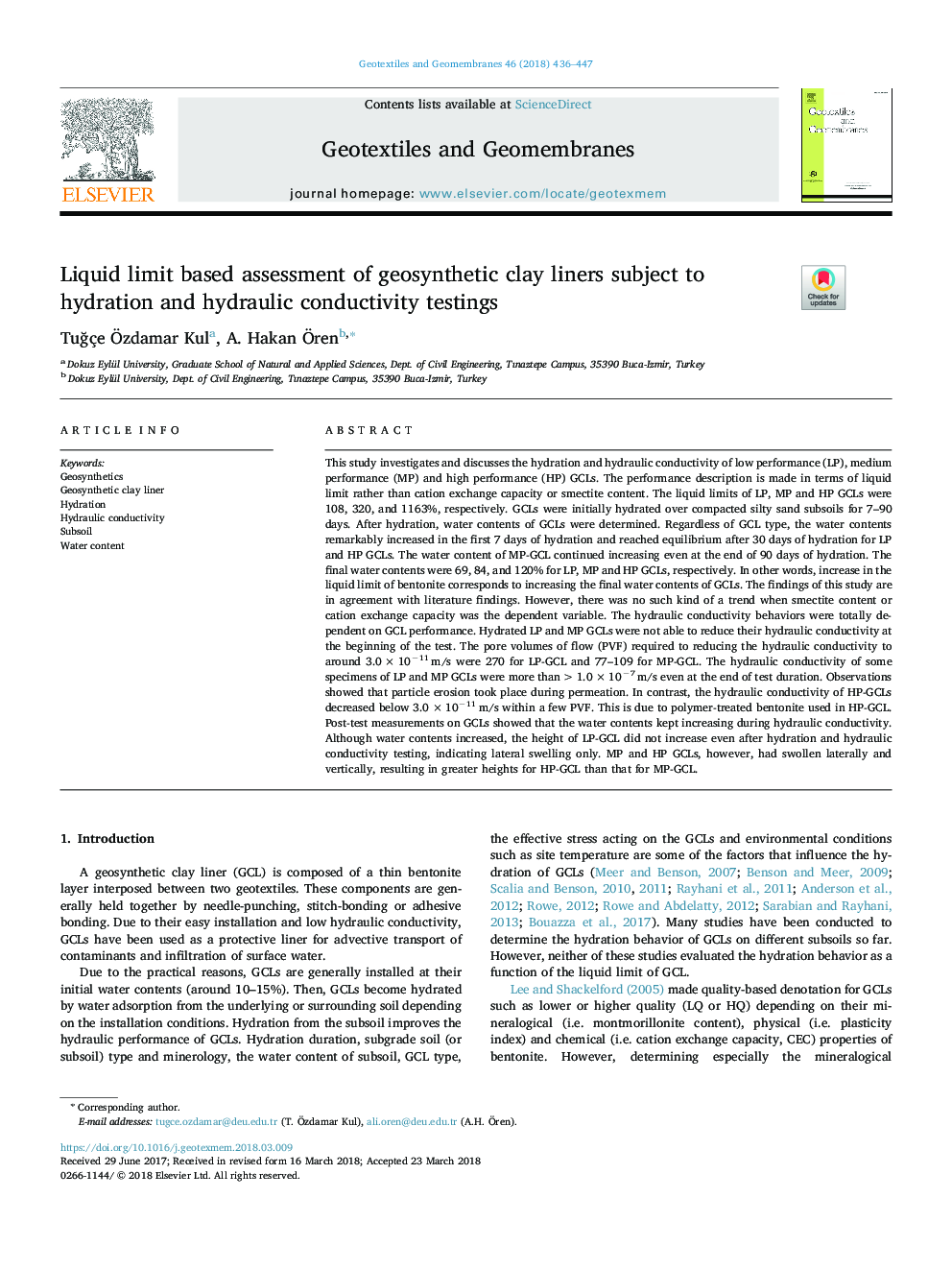| کد مقاله | کد نشریه | سال انتشار | مقاله انگلیسی | نسخه تمام متن |
|---|---|---|---|---|
| 6746839 | 1429442 | 2018 | 12 صفحه PDF | دانلود رایگان |
عنوان انگلیسی مقاله ISI
Liquid limit based assessment of geosynthetic clay liners subject to hydration and hydraulic conductivity testings
ترجمه فارسی عنوان
ارزیابی مایع بر اساس لاینرهای رسی ژئوسینتتسستری تحت بررسی هیدراتاسیون و هدایت هیدرولیکی
دانلود مقاله + سفارش ترجمه
دانلود مقاله ISI انگلیسی
رایگان برای ایرانیان
کلمات کلیدی
ژئوسنتتیک، لاشه خشتی ژئوسنتتیک، هیدراتاسیون، هدایت هیدرولیکی، زیر زمین، محتوای آب،
موضوعات مرتبط
مهندسی و علوم پایه
علوم زمین و سیارات
مهندسی ژئوتکنیک و زمین شناسی مهندسی
چکیده انگلیسی
This study investigates and discusses the hydration and hydraulic conductivity of low performance (LP), medium performance (MP) and high performance (HP) GCLs. The performance description is made in terms of liquid limit rather than cation exchange capacity or smectite content. The liquid limits of LP, MP and HP GCLs were 108, 320, and 1163%, respectively. GCLs were initially hydrated over compacted silty sand subsoils for 7-90 days. After hydration, water contents of GCLs were determined. Regardless of GCL type, the water contents remarkably increased in the first 7 days of hydration and reached equilibrium after 30 days of hydration for LP and HP GCLs. The water content of MP-GCL continued increasing even at the end of 90 days of hydration. The final water contents were 69, 84, and 120% for LP, MP and HP GCLs, respectively. In other words, increase in the liquid limit of bentonite corresponds to increasing the final water contents of GCLs. The findings of this study are in agreement with literature findings. However, there was no such kind of a trend when smectite content or cation exchange capacity was the dependent variable. The hydraulic conductivity behaviors were totally dependent on GCL performance. Hydrated LP and MP GCLs were not able to reduce their hydraulic conductivity at the beginning of the test. The pore volumes of flow (PVF) required to reducing the hydraulic conductivity to around 3.0â¯Ãâ¯10â11â¯m/s were 270 for LP-GCL and 77-109 for MP-GCL. The hydraulic conductivity of some specimens of LP and MP GCLs were more than >1.0â¯Ãâ¯10â7â¯m/s even at the end of test duration. Observations showed that particle erosion took place during permeation. In contrast, the hydraulic conductivity of HP-GCLs decreased below 3.0â¯Ãâ¯10â11â¯m/s within a few PVF. This is due to polymer-treated bentonite used in HP-GCL. Post-test measurements on GCLs showed that the water contents kept increasing during hydraulic conductivity. Although water contents increased, the height of LP-GCL did not increase even after hydration and hydraulic conductivity testing, indicating lateral swelling only. MP and HP GCLs, however, had swollen laterally and vertically, resulting in greater heights for HP-GCL than that for MP-GCL.
ناشر
Database: Elsevier - ScienceDirect (ساینس دایرکت)
Journal: Geotextiles and Geomembranes - Volume 46, Issue 4, August 2018, Pages 436-447
Journal: Geotextiles and Geomembranes - Volume 46, Issue 4, August 2018, Pages 436-447
نویسندگان
TuÄçe Ãzdamar Kul, A. Hakan Ãren,
